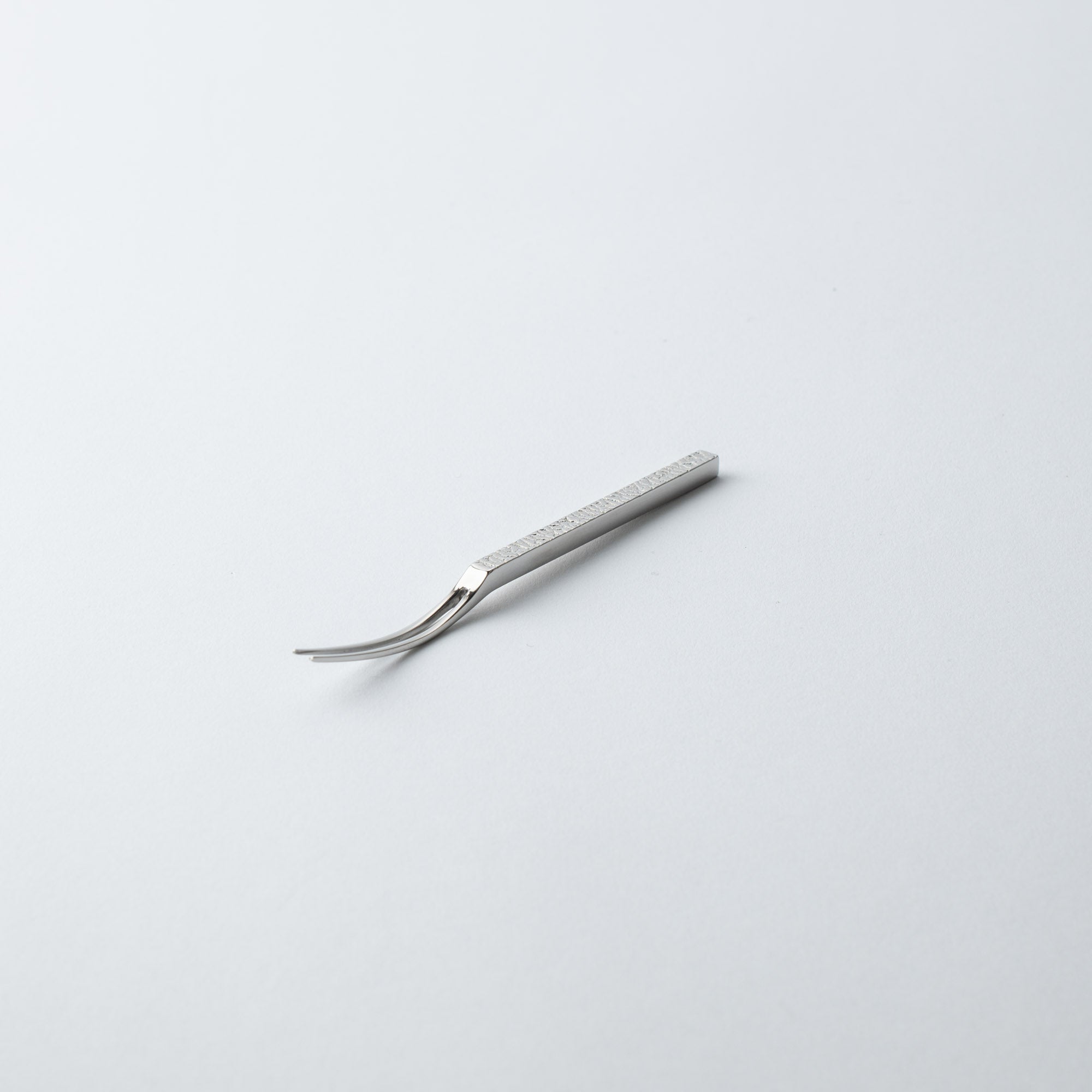
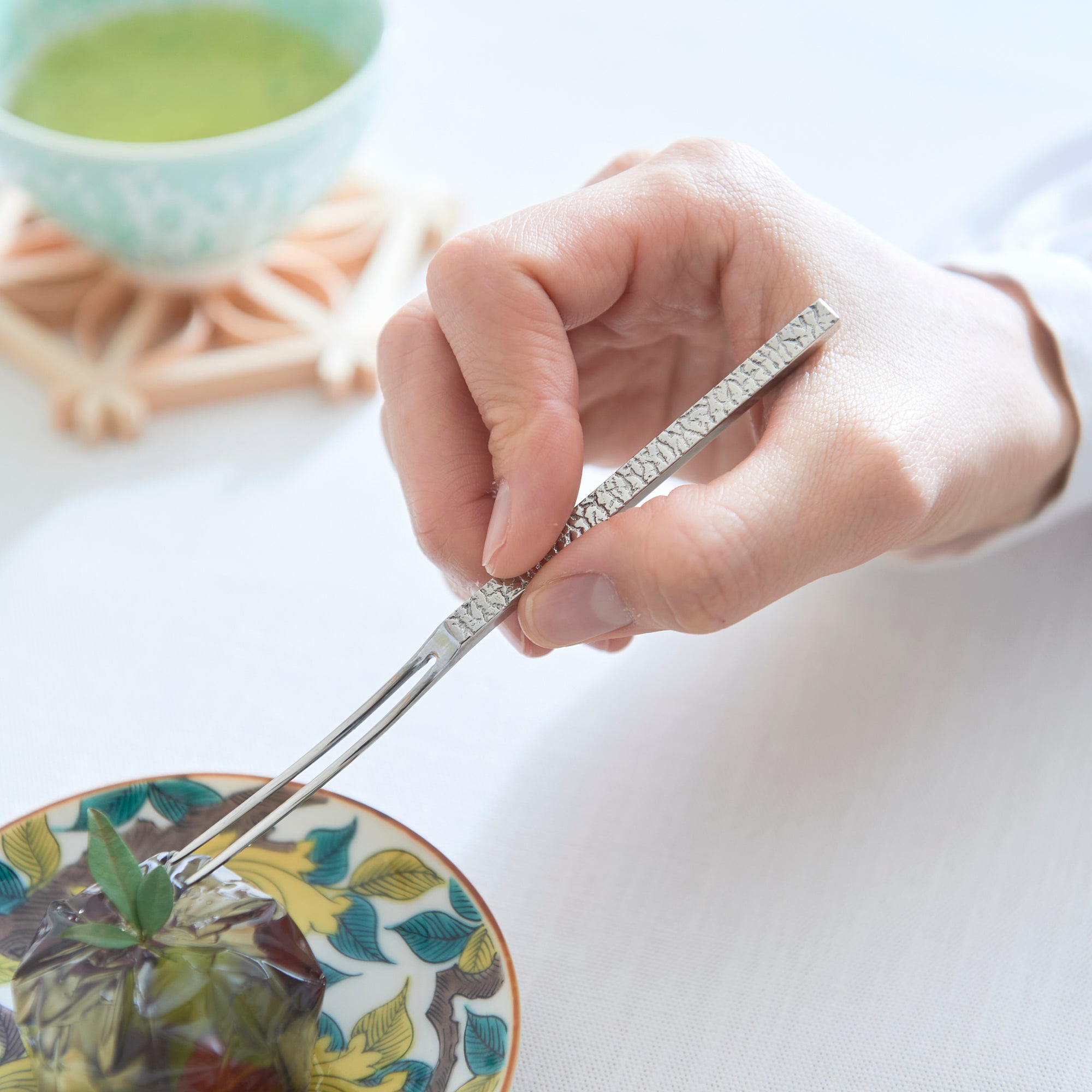
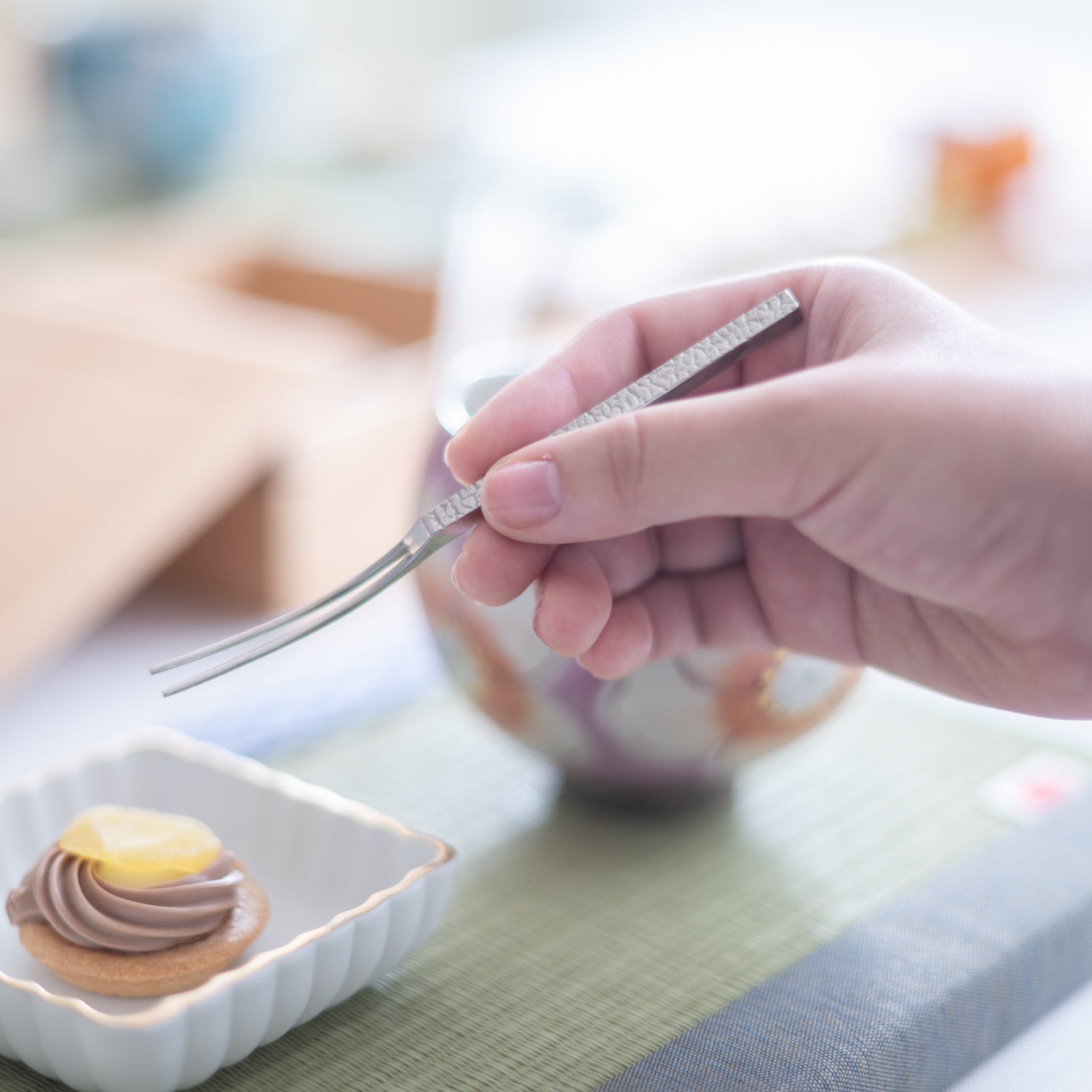

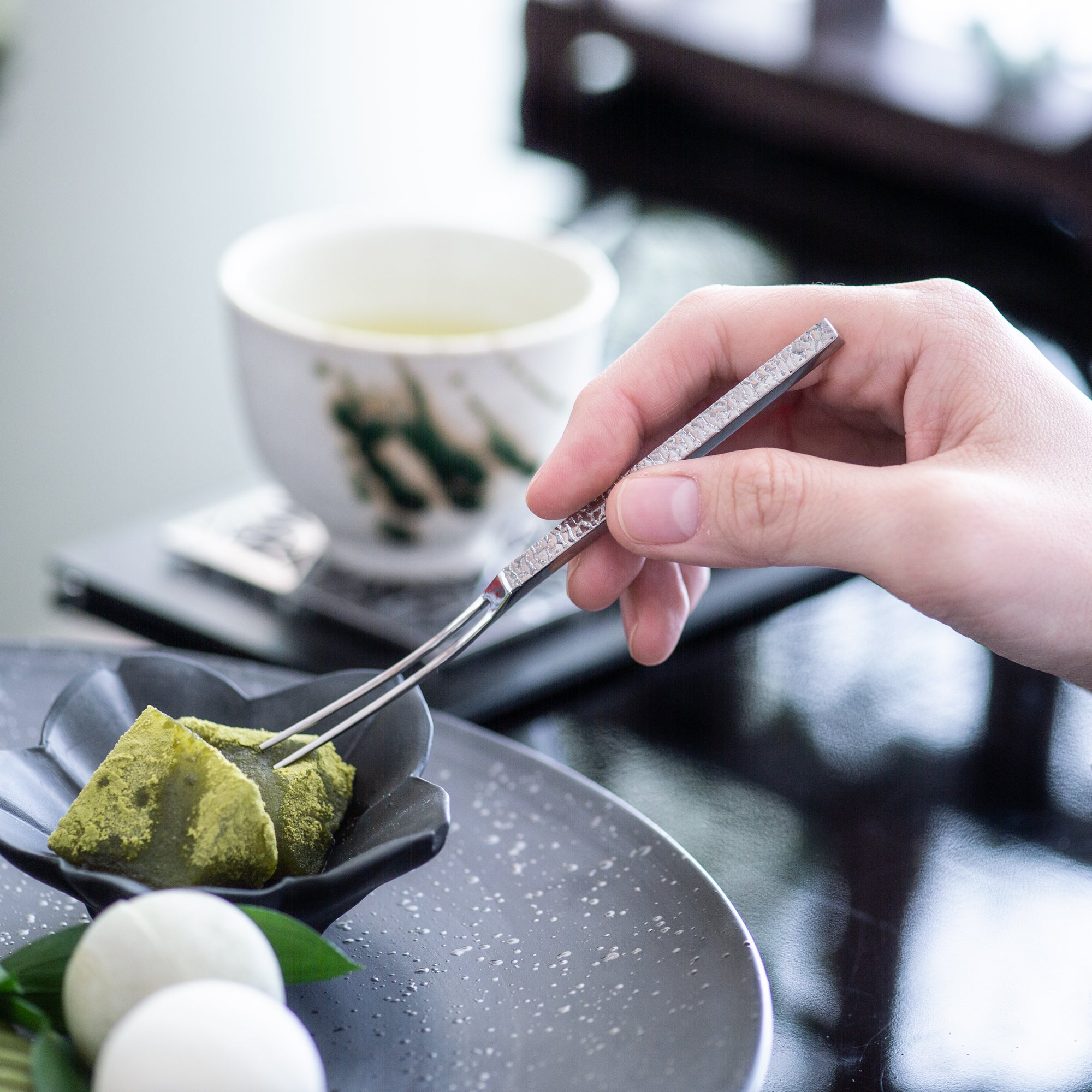
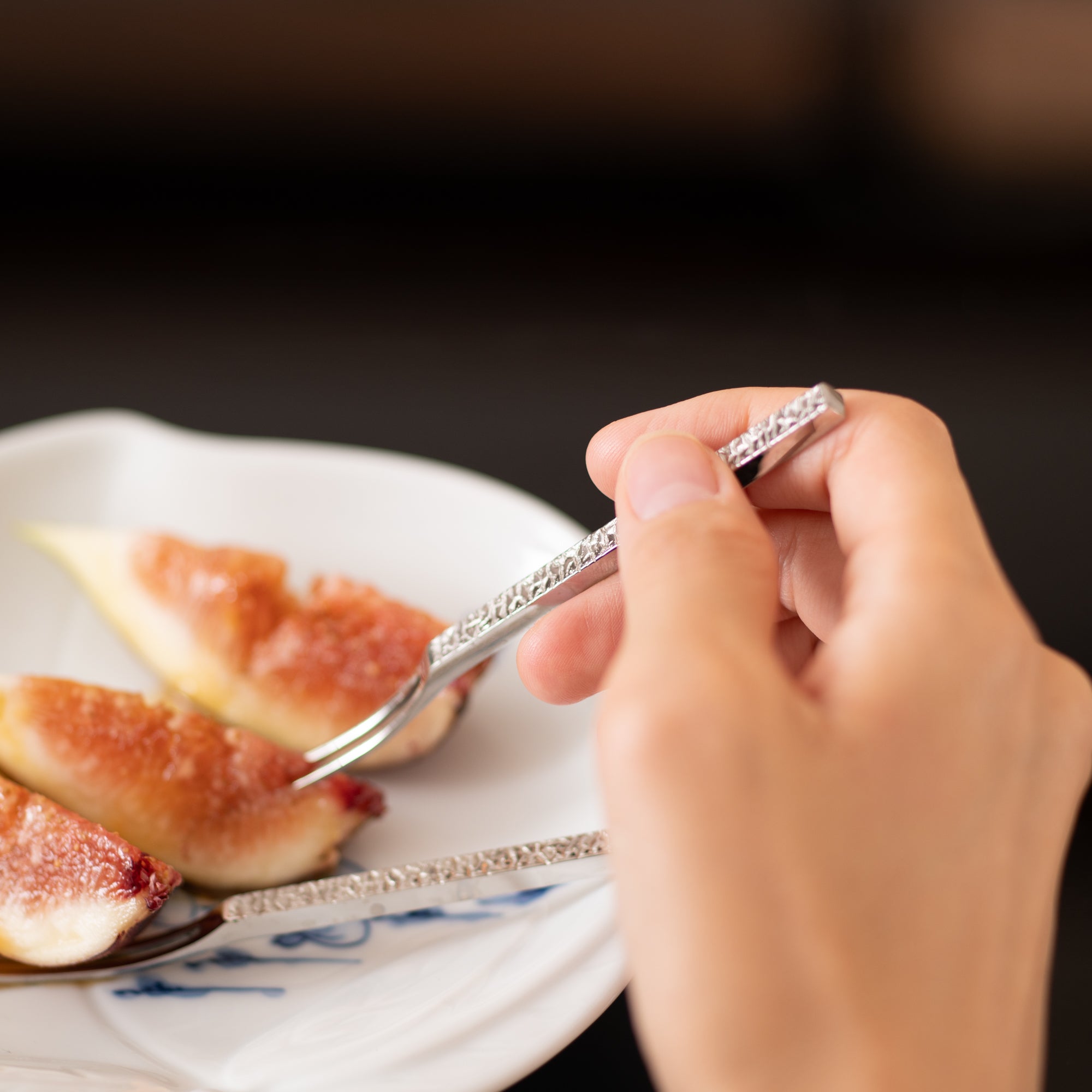

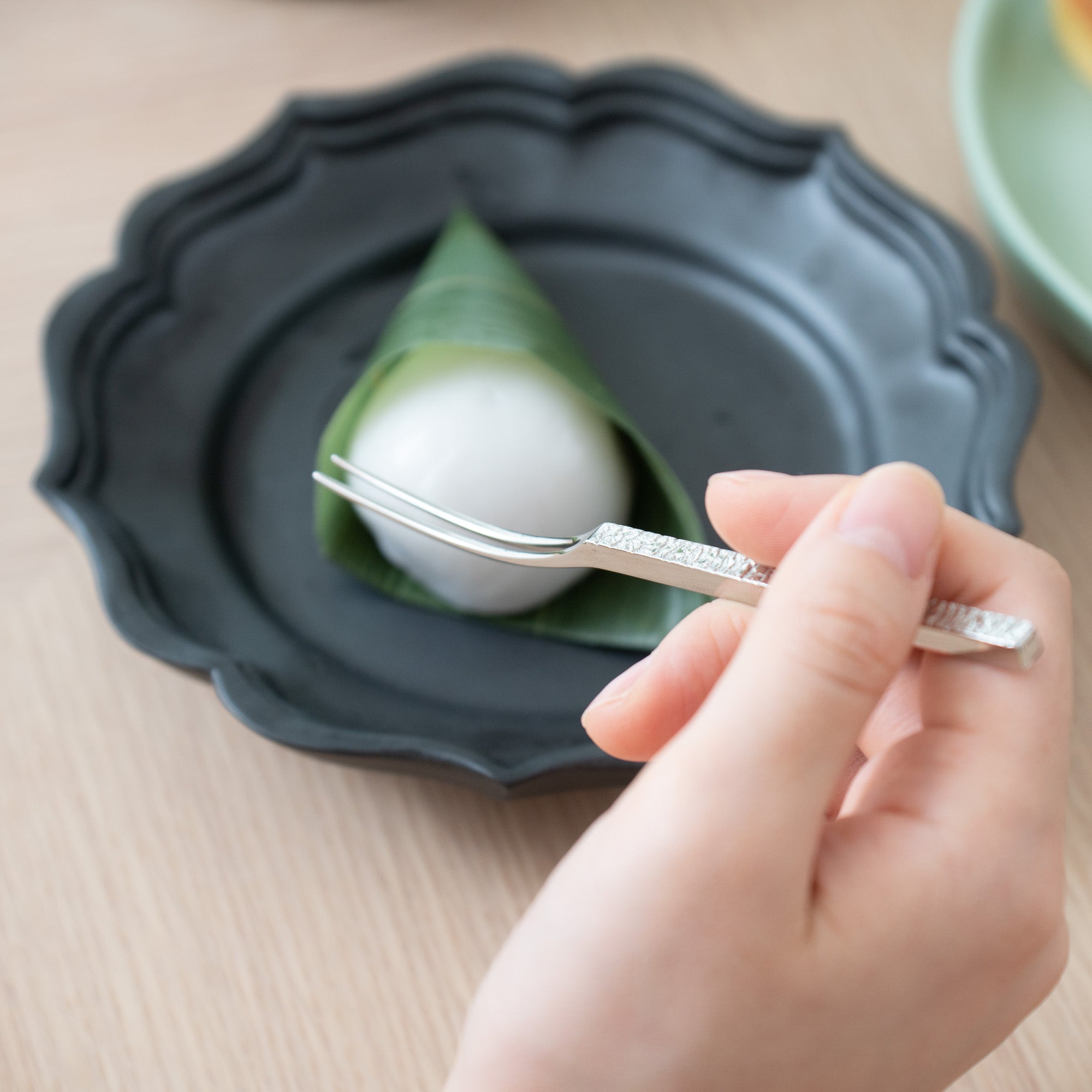


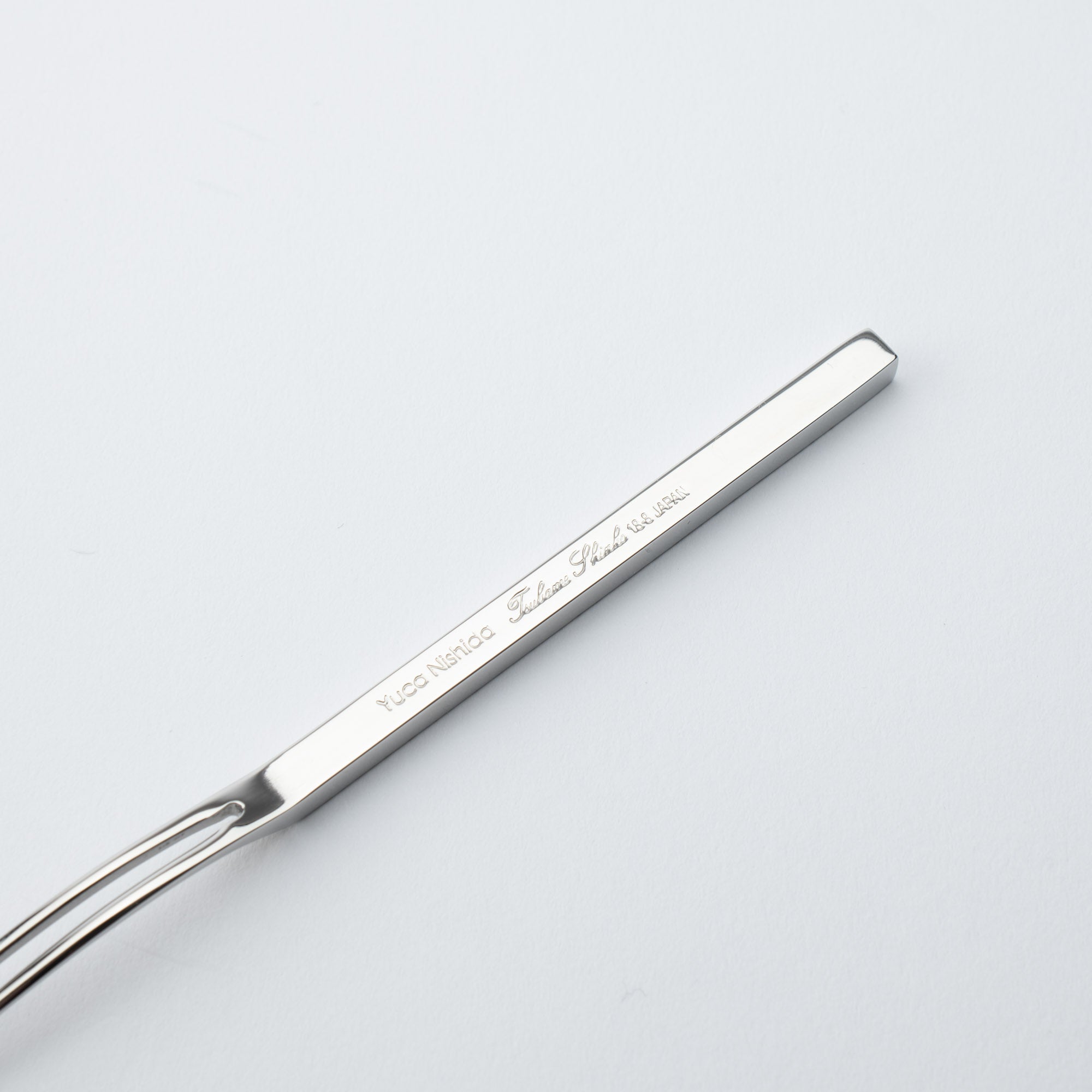

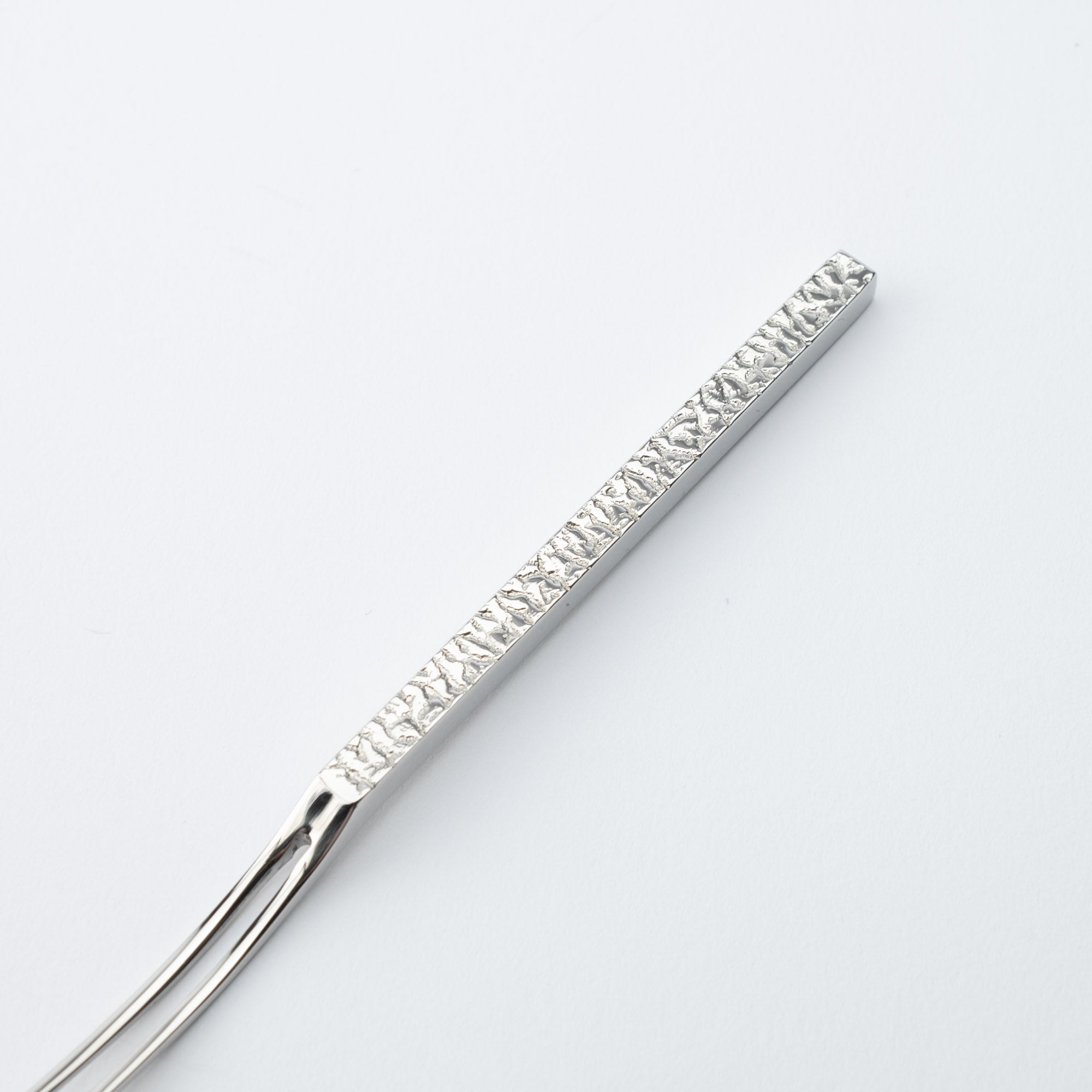
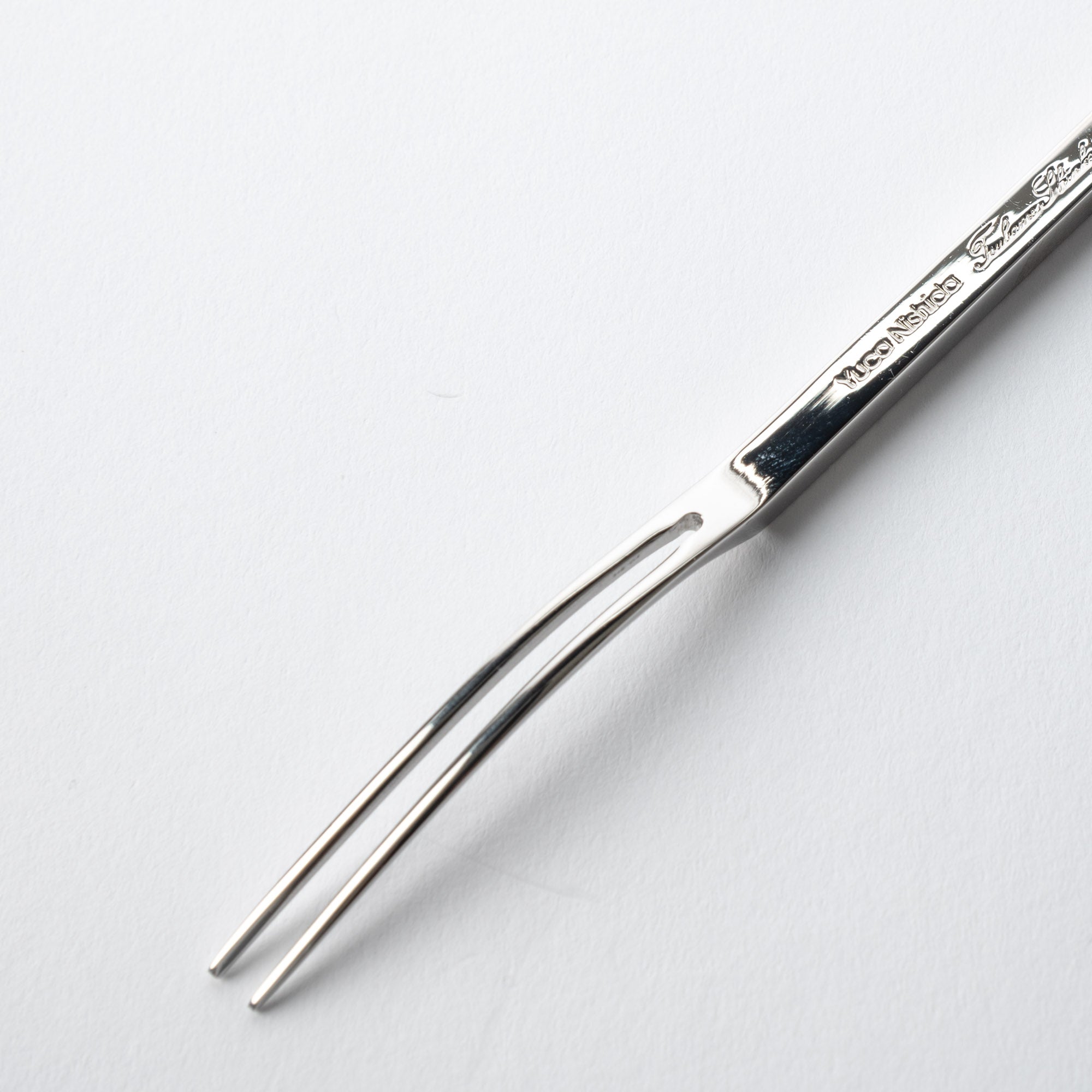

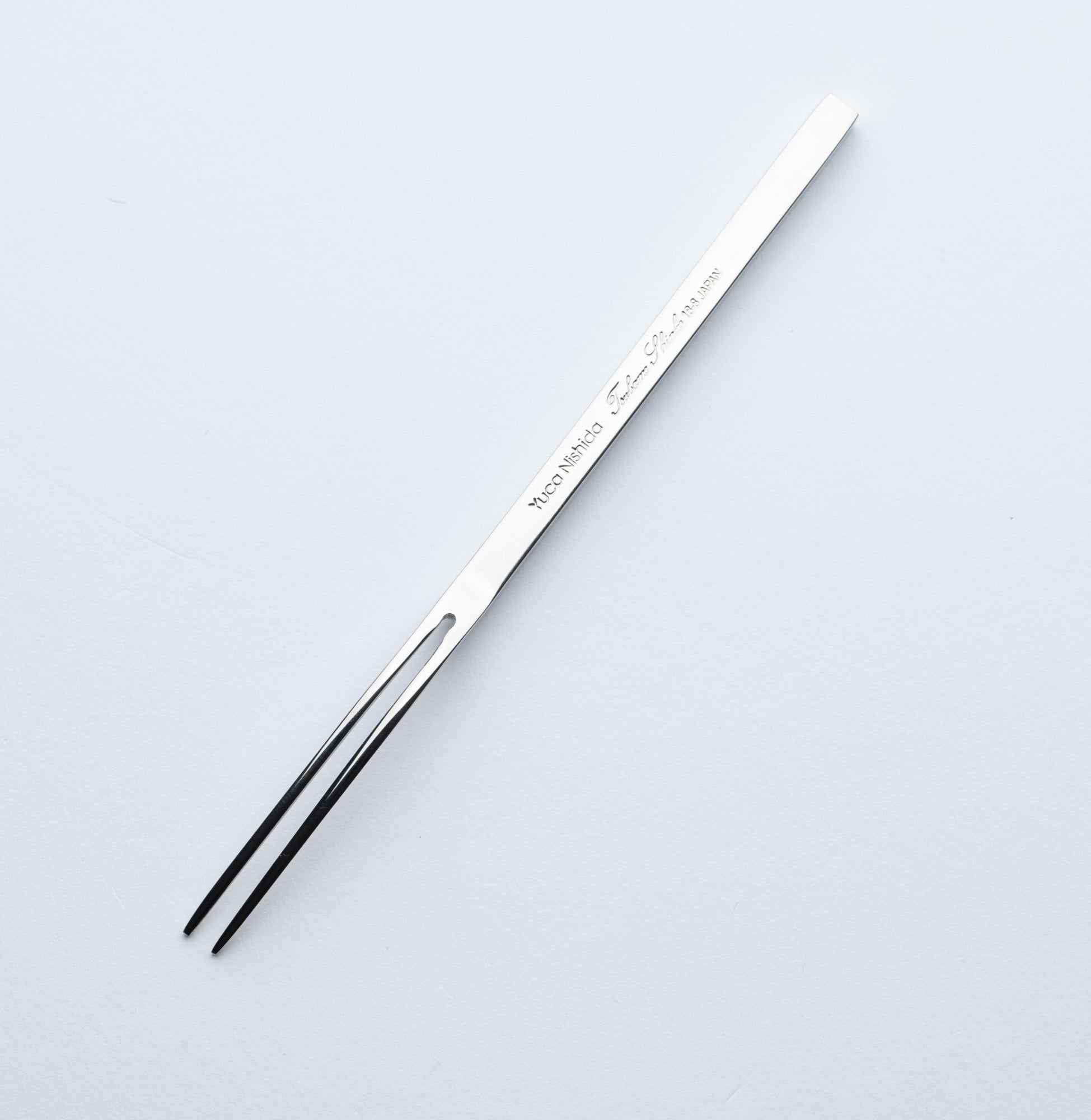
Tsubame MODERN WABI SABI Mirror Finish Fruit Fork
Estimated Shipping Widget will be displayed here!
This is a fruit fork from the "MODERN WABI SABI" series, characterized by a fusion of traditional and stylish ambiance. It is crafted in Tsubame-Sanjo, a region that accounts for 90% of domestic metal utensil production in Japan.
This elegant and high-quality cutlery is designed by Yuka Nishida, a ceramic artist from Arita ware. The handle features a tasteful cracked pattern that reminds one of Japan's beautiful traditional earthen walls.
Made from 5mm(0.2in) stainless steel square material, this fruit fork is sharper than the average fork, yet has a solid and luxurious feel.
It is also dishwasher safe.
This item is perfect not only for daily use but also for entertaining guests or as a thoughtful gift for someone special.
This series created by Arita ware ceramic artist Yukari Nishida during her stay in Italy, inspired by the 20th-century Italian painter and sculptor Alberto Burri. By combining the Japanese notion of "beauty in imperfection" as introduced by Wabi Sabi with a contemporary twist, this concept presents a distinctive technique known as "Modern Wabi Sabi." The texture and simple form of the pieces showcase a stylish aesthetic while preserving the natural feel of the materials, without being overly earthy.
PRODUCT DETAIL
- Quantity: 1 piece
- Dimension: 12.9cm(5.1in) x 0.5cm(0.2in)
- Material: Stainless steel
- Origin: Made in Japan - Tsubame Sanjo Metalwork
-
Brand: Tsubame Shinko
Choose options
















Estimated Shipping Widget will be displayed here!
International Shipping
Multiple International Shipping Options
Discounted shipping for over 500000!
Free shipping for over 5000000!
Insured shipping service
Full compensation for any damage during transit.
Made by Japanese craftsmen
Fair Pricing, free Furoshiki wrapping!

